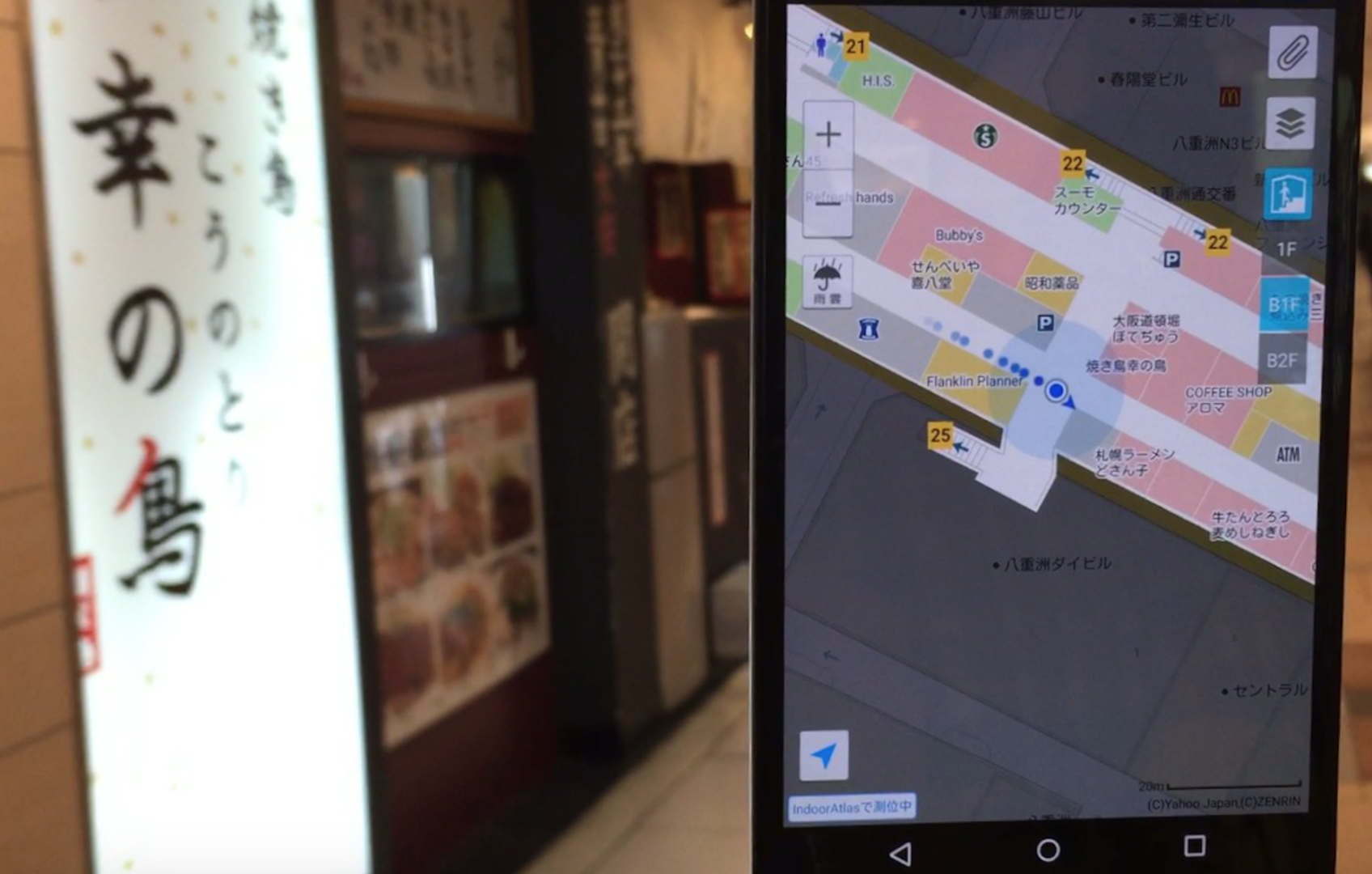Geomagnetic Platform IndoorAtlas Does Extensive Deal With Yahoo Japan
Company enables indoor location and proximity marketing by reading and mapping magnetic fields.
Beacons have grabbed the majority of attention when it comes to indoor location and proximity marketing. However, geomagnetic positioning platform IndoorAtlas has a provocative alternative to beacons.
Late last week, the company announced a deal with Yahoo Japan. Yahoo becomes the second major Asian internet company to form a relationship with the company. In late 2014, Chinese search giant Baidu invested $10 million in IndoorAtlas.
The Yahoo Japan deal further validates the IndoorAtlas technology, which uses no hardware and was inspired by animal wayfinding in nature. Animals rely upon the Earth’s magnetic fields to locate themselves along migratory paths and to find destinations. Smartphones can also detect and respond to magnetic field variations.
The company was founded in 2012 by Finnish academic Janne Haverinen and was initially met with considerable skepticism. However, Yahoo Japan chose to work with IndoorAtlas specifically because it does not involve hardware and beacons. In a press statement, Yahoo Japan president Gen Miyazawa asserted it was the most scalable indoor location solution on the market.
Yahoo Japan has yet to roll out any apps or solutions using IndoorAtlas but plans a range of use cases, including indoor mapping and navigation and proximity marketing. Yahoo is also integrating the IndoorAtlas technology into the SDK for Yahoo Japan maps. (Yahoo US relies on HERE; Yahoo Japan has a proprietary mapping product.)
IndoorAtlas maps building interiors using “magnetic fingerprints.” This is based on the way building materials uniquely affect and “distort” the otherwise persistent magnetic field generated by the Earth. Those patterns can be assigned to a building floor plan to enable precise indoor location detection. I have seen it in action and was very impressed by its consistent accuracy.
IndoorAtlas’ geomagnetic positioning is complementary to WiFi and beacons and can be used in conjunction with either or both. Indeed, IndoorAtlas has added in WiFi positioning as a way to get a “first fix” on the user before magnetic positioning can take over in building interiors.
IndoorAtlas has developed a “freemium” business model based on active monthly users rather than technology licensing, which is generally the model for beacons. According to the company’s COO, Dan Patton, 25,000 active developers in 100 countries are using the IndoorAtlas SDK.
Although indoor couponing and wayfinding are the typical examples of indoor proximity marketing, there are all kinds of uses for indoor location and related data beyond these. Ultimately, indoor location will proliferate because of a cooperative and complementary range of technologies, including beacons, LED lighting, WiFi triangulation, magnetic positioning and others.
Postscript: The image above is from Yahoo Japan’s updated mapping application, which has recently gone live and incorporates IndoorAtlas technology.
Opinions expressed in this article are those of the guest author and not necessarily MarTech. Staff authors are listed here.
Related stories

